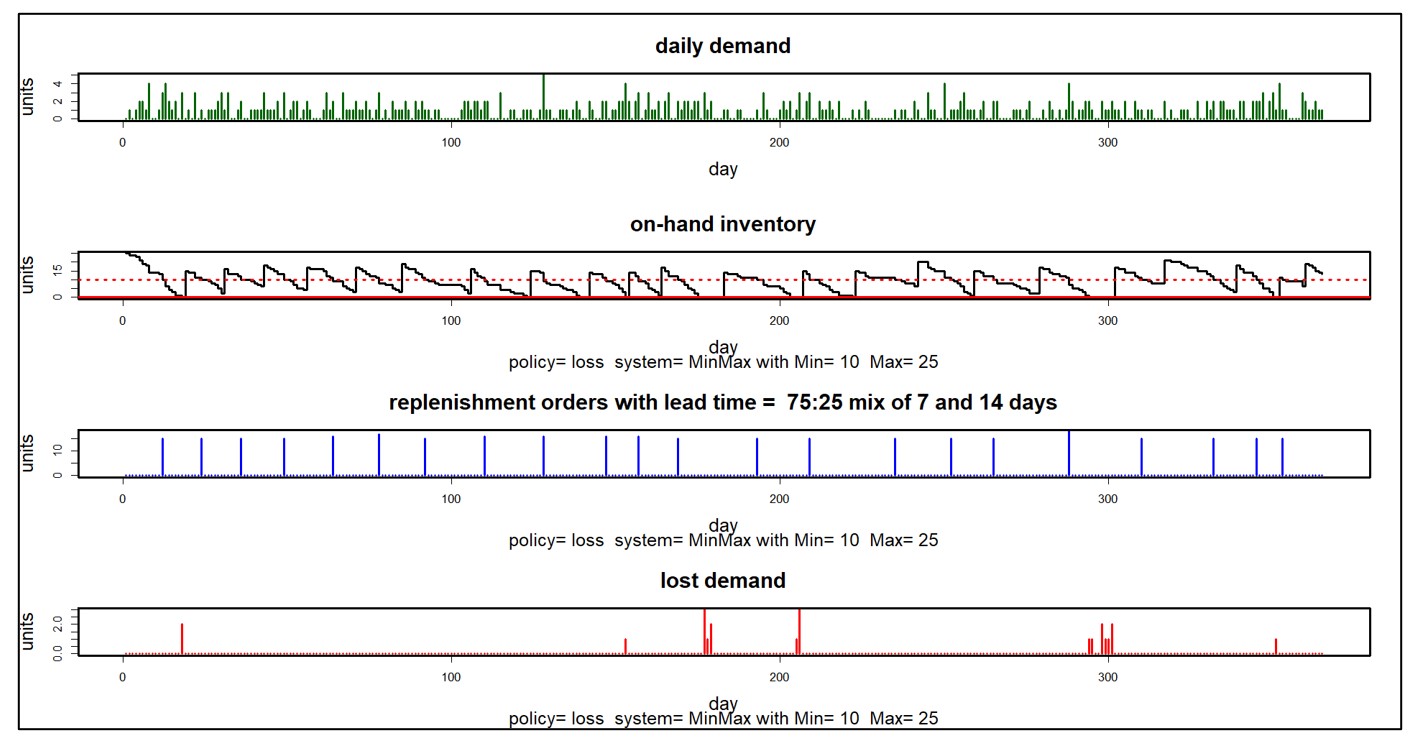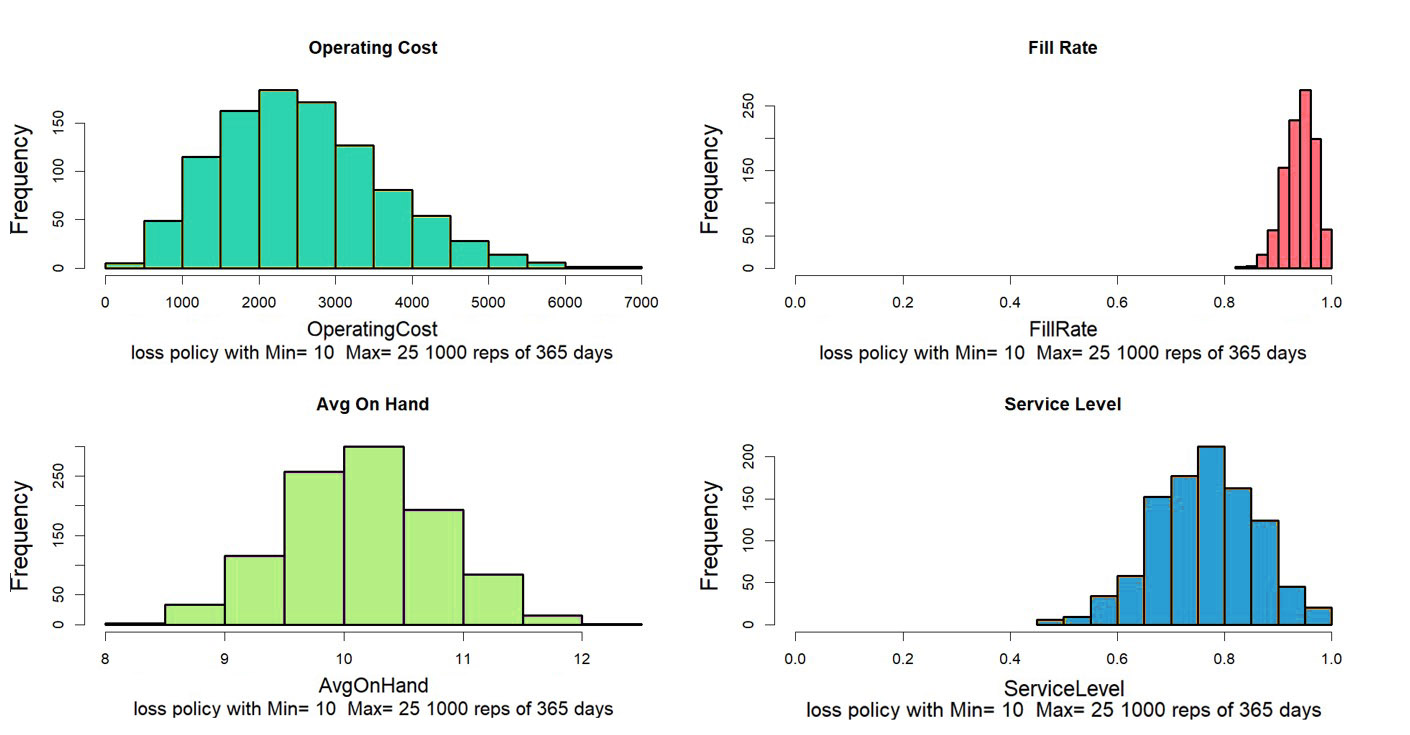Inventory overstocking can harm both financial stability and operational efficiency. When an organization is overstocked, it ties up capital in excess inventory that might not sell, increasing storage costs and the risk of inventory obsolescence. Additionally, the funds used to purchase the excess inventory could have been better invested in other areas of the business, such as marketing or research and development. Overstocking also hampers cash flow, as money is locked in stock rather than available for immediate operational needs. Managing inventory effectively is critical for maintaining a healthy balance sheet and ensuring that resources are optimally allocated. Here is an in-depth exploration of the main causes of overstocking, their implications, and possible solutions.
1 Inaccurate Demand Forecasting
One of the primary causes of overstocking is inaccurate demand forecasting. When businesses rely on outdated forecasting methods or insufficient data, they can easily overestimate demand, leading to overstocking. A prime example is the clothing industry, where fashion trends can change rapidly. A well-known fashion brand recently faced challenges after overestimating demand for a new clothing line based on flawed data analysis, leading to unsold inventory.
To address this issue, companies can implement new technologies that automatically select the best forecasting methods for the data, incorporating trends and seasonal patterns to ensure accuracy. By improving forecasting accuracy, businesses can better align their inventory with actual demand, leading to more precise inventory management and fewer overstock scenarios. For instance, a Hardware retailer using Smart Demand Planner reduced forecasting errors by 15%, demonstrating the potential for significant improvement in inventory management.
2 Improper Inventory Management
Effective inventory management is fundamental to prevent overstocking. Without accurate systems to track inventory levels, businesses might order excess stock and incur higher expenses. This issue often stems from reliance on spreadsheets or inefficient ERP systems that lack real-time data integration.
State-of-the-art technologies provide real-time visibility into inventory levels, allowing businesses to automate and optimize reordering processes. A large electric utility company faced challenges in maintaining service parts availability without overstocking, managing over 250,000 part numbers across a diverse network of power generation and distribution facilities. The company replaced its outdated system with Smart IP&O and integrated it in real-time with their Enterprise Asset Management (EAM) system. Smart IP&O enabled the utility to use “what-if” scenarios, creating digital twins of alternate stocking policies and simulating performance across key performance indicators, such as inventory value, service levels, fill rates, and shortage costs. This allowed the utility to make targeted adjustments to their stocking parameters, which were then deployed to their EAM system, driving optimal replenishments of spare parts.
The outcome was significant: a $9 million reduction in inventory, freeing up cash and valuable warehouse space while sustaining target service levels of over 99%
3 Overly Optimistic Sales Projections
Businesses, especially those in growth phases, may predict higher sales than they achieve, leading to excess inventory intended to meet anticipated demand that never materializes. An example of this is the recent case with an electric vehicle manufacturer that projected high sales for its truck but faced production delays and lower-than-expected demand, resulting in an overstock of components and parts. This miscalculation led to increased storage costs and strained financial resources.
Another automotive aftermarket company struggled to forecast intermittently demanded parts accurately, frequently resulting in overstocking and stockouts. Using AI-driven technology enabled the company to significantly reduce backorders and lost sales, with fill rates improving from 93% to 96% within just three months. By leveraging Smart IP&O forecasting technologies, the company could generate accurate estimates of cumulative demand over lead times, providing better visibility of potential demand scenarios. This allowed for optimized inventory levels, reducing storage costs and improving financial efficiency by aligning inventory with actual demand.
4 Bulk Purchasing Discounts
The appeal of cost savings from bulk purchases can prompt businesses to buy more than needed, tying up capital and storage space. This often leads to storage challenges when excess stock is ordered to secure a discount.
To address this challenge, businesses should weigh the benefits of bulk discounts against the costs of holding excess inventory. Next-generation technology can help identify the most cost-effective purchasing strategy by balancing immediate savings with long-term storage costs. By implementing Smart IP&O, MNR could accurately forecast inventory requirements and optimize its inventory management processes. This led to an 8% reduction in parts inventory, reaching a high customer service level of 98.7% and reducing inventory growth for new equipment from a projected 10% to only 6%.
5 Seasonal Demand Fluctuations
Difficulty in aligning inventory with seasonal demand can result in surplus stock once the peak sales period ends. Toy manufacturers, for example, might produce too many holiday-themed toys only to face low demand after the holidays. The fashion industry frequently experiences similar challenges, with certain styles becoming obsolete as seasons change. The latest technologies can help businesses anticipate seasonal demand shifts and adjust inventory levels accordingly. By analyzing past sales data and predicting future trends, businesses can better prepare for seasonal fluctuations, minimize overstocking risk, and improve inventory turnover.
6 Supplier Lead Time Variability
Unreliable supplier lead times can lead to overstocking as a buffer against delays. If lead times improve or demand decreases unexpectedly, businesses may have excess inventory. For example, an auto parts distributor might stockpile components to mitigate supplier delays, only to find lead times improving suddenly.

Advanced technology can help by providing real-time data and predictive analytics to manage lead time variability better. These tools allow companies to dynamically adjust their orders, reducing the need for excessive safety stock.
7 Inadequate Inventory Policies
Outdated or incorrect inventory policies, such as faulty Min/Max settings, can lead to over-ordering. However, using Modern technology to regularly review and update inventory policies ensures they align with current business needs and market conditions. By keeping policies up-to-date, businesses can reduce the risk of overstocking due to procedural errors. A recent case study demonstrated how a major retailer used Smart IP&O to revise inventory policies, resulting in a 15% reduction in overstock.
8 Promotions and Marketing Campaigns
Misalignment between marketing efforts and actual customer demand can cause businesses to overestimate the impact of promotions, resulting in unsold inventory. For example, a cosmetics company might overproduce a limited edition product, expecting high demand that doesn’t materialize. Leveraging Smart IP&O can help align marketing initiatives with realistic demand expectations, avoiding excess stock. By integrating marketing plans with demand forecasts, businesses can optimize their promotional strategies to better match actual customer interest.
9 Fear of Stockouts
Companies often maintain higher inventory levels to avoid stockouts, which can lead to lost sales and unhappy customers. This fear can drive businesses to overstock as a safety net, especially in industries where customer satisfaction and retention are crucial. A notable example comes from a large retail chain that significantly increased its inventory of household goods to avoid stockouts. While this strategy initially helped meet customer demand, it later resulted in excess inventory as consumer purchasing patterns stabilized. This overstocking contributed to a profit drop of nearly 90% in the second quarter, largely due to markdowns and the clearing of excess stock.
To mitigate such situations, businesses can utilize advanced inventory planning and optimization tools to provide accurate demand forecasts. For instance, a leading electronics manufacturer used Smart IP&O solution to reduce inventory levels by 20% without impacting service levels, effectively reducing costs while maintaining customer satisfaction by ensuring they had the right amount of stock on hand.
10 Overcompensation for Supply Chain Issues
Businesses may overstock to safeguard against ongoing supply chain disruptions, but this can lead to storage issues. For instance, a tech company might stockpile components to avoid potential supply chain hiccups, resulting in surplus inventory and increased costs. Advanced systems can help businesses better anticipate and respond to supply chain challenges, balancing the need for safety stock with the risk of overstocking. A technology firm used Smart IP&O to streamline its inventory strategy, reducing excess stock by 20% while maintaining supply chain resilience.
11 Long Lead Times and Unreliable Suppliers
Prolonged lead times and unreliable suppliers can lead businesses to order more stock than needed to cover potential supply gaps. However, less critical Items that are forecasted to achieve very high service levels represent opportunities to reduce inventory. By targeting lower service levels on less critical items, inventory will be “right size” over time to the new equilibrium, decreasing holding costs and the value of inventory on hand. A major public transit system reduced inventory by more than $4,000,000 while improving service levels using our cutting-edge technology.
12 Lack of Real-Time Inventory Visibility
Without real-time insights into inventory, businesses often order more stock than necessary, leading to inefficiencies and increased costs. Smart IP&O enabled Seneca companies to model demand at each stocking location and, using service level-driven planning, determine how much to stock to achieve the service level we require. By running and comparing different scenarios, they can easily define and update optimal stocking policies for each tech support rep and stockrooms.
The software has provided field technicians with evidence they did not have before, showing them their actual consumption, frequency of part use, and rationale for stocking policies, using 90% as the targeted service level norm. Field technicians have embraced its use, with significant results: “Zero Turns” inventory has dropped from $400K to under $100K, “First Fix Rate” exceeds 90%, and total inventory investment has decreased by more than 25%, from $11 million to $ 8 million.
In conclusion, overstocking seriously threatens business profitability and efficiency, leading to increased storage costs, tied-up capital, and potential obsolescence of goods. These issues can strain resources and limit a company’s ability to respond to market changes. However, overstocking can be effectively managed by understanding its causes, such as inaccurate demand forecasting, prolonged lead times, and unreliable suppliers. Implementing robust AI-driven solutions like Smart IP&O can help businesses optimize inventory levels, reduce excess stock, and enhance operational efficiency. By leveraging advanced forecasting and inventory optimization tools, companies can find the right balance in meeting customer demand and minimizing inventory-related costs.





